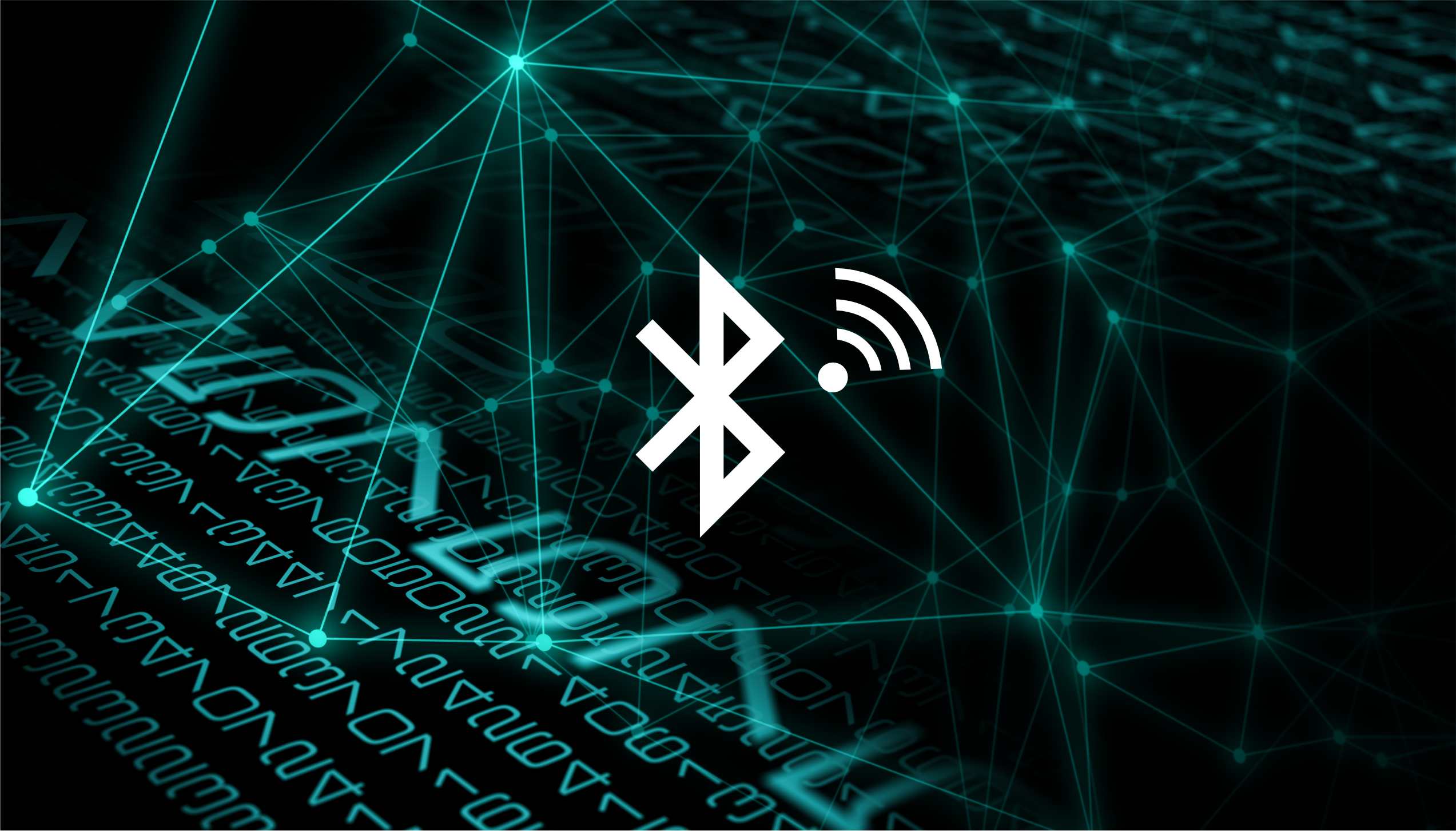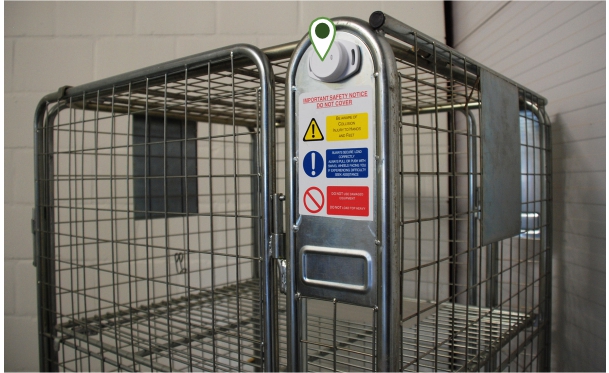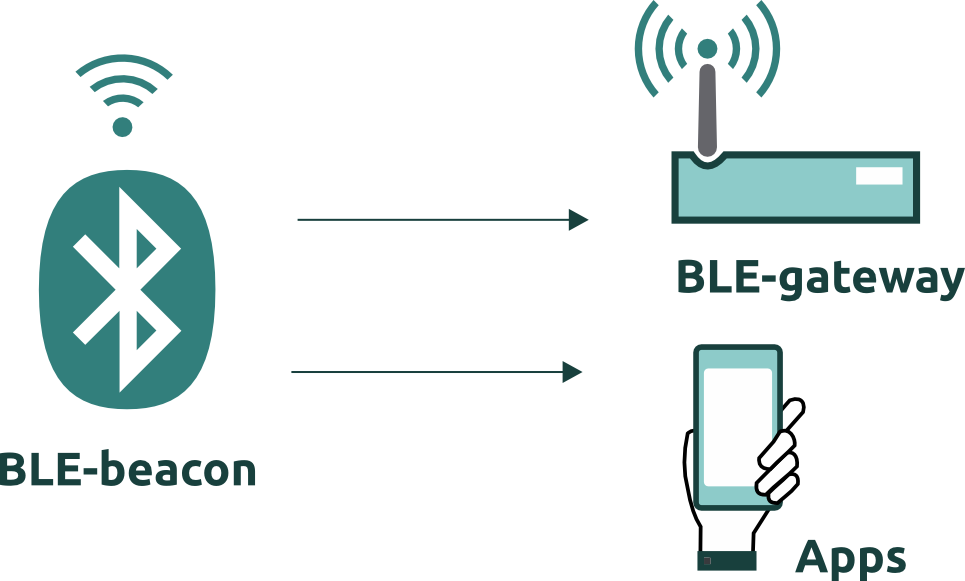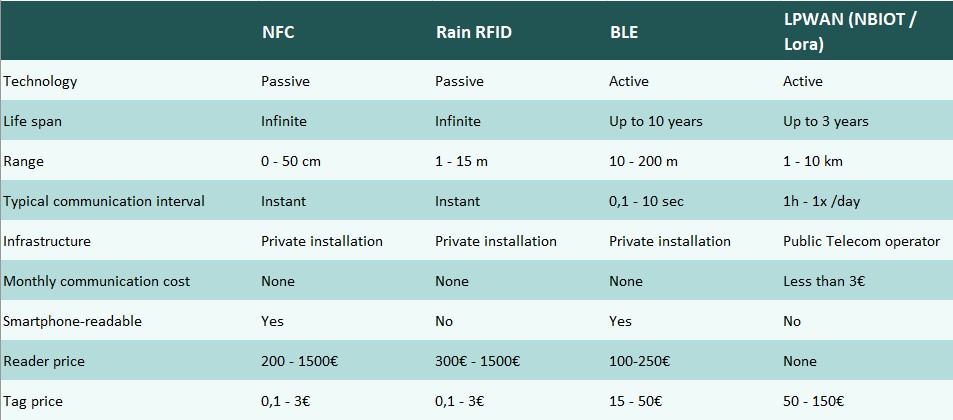"*" indicates required fields
Bluetooth Low Energy
BLE
Bluetooth Low Energy

In our modern world where connectivity plays an increasingly significant role, various wireless technologies have become the backbone of daily interactions and activities. Bluetooth, WiFi, NFC and 5G networks are just a few examples of the many technological innovations that enable us to be wirelessly connected to a variety of devices and services.
Within today’s communication landscape, Bluetooth Low Energy (BLE) stands out as a significant technological advancement. BLE offers benefits such as efficient energy consumption, suitability for small devices, and the ability to quickly establish connections over short distances, making it ideal for numerous IoT applications. With BLE present on every smartphone, there is vast potential for its utilisation with access to an extensive network.
BLE finds a wide range of applications, such as:
- Tracking and management of assets and RTIs withing factories, warehouses, logistics centers
- Communication between machines, sensors and controllers in production companies
- Condition monitoring of pharmaceuticals
- Localisation of furniture and medical equipment in hospitals
- ….



From smart wearables to home automation and industrial applications, BLE has had a strong impact on how devices communicate and exchange information and it remains a growing trend in the world of wireless communication.
Bluetooth Low Energy (BLE) operates on the 2.4 GHz frequency band, the same as classic Bluetooth.
Within this band, BLE utilises specific frequency channels to enable communication between devices. BLE employs a technique called frequency hopping spread spectrum (FHSS), in which the communicating device rapidly switches between available channels to minimise interference and ensure more reliable communication, especially in busy wireless environments.
What do you need to establish BLE communication?

A BLE tag or BLE beacon is a shock-resistant tag with integrated battery. The tag transmits its unique ID via radio frequency at fixed intervals and can last for several years depending on the chosen signal intervals. Various types of BLE tags are available on the market, including BLE asset tags, BLE wristbands, BLE keychains, and more.

A BLE gateway wirelessly collects data from tagged goods or persons and then transmits the data to the cloud via Ethernet, Wi-Fi, or mobile wireless networks. A smartphone also possesses BLE capabilities and can thus function as a BLE gateway to read BLE tags in its vicinity and register them along with its location.
The selection of the most suitable wireless communication technology is essential for businesses striving for energy-efficient, reliable and cost-effective wireless connections. In what specific scenarios and circumstances does BLE emerge as the most suitable choice? The following properties of BLE are decisive:
- Energy efficiency
- Short-range communication
- Limited connection time
- Highly accessible
- Sensor networks and data collection
- Limited data speed
- Price

The continuous evolution and widespread acceptance of BLE have led to innovative solutions that have transformed the way we communicate, gather data, and connect with the world around us. As technologies continue to advance, BLE remains a cornerstone of connectivity, proving its value through its versatility, reliability and energy efficiency.
Future developments in BLE are expected to further optimise and broaden its application areas, ensuring its continued significance in the field of wireless communication. In the coming years, we anticipate significant growth in the tagging of RTIs (Returnable Transport Items) and other assets with BLE tags.